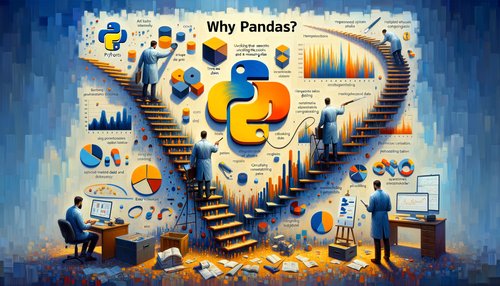Unlock the Power of Pandas: Expert Tips to Skyrocket Your Data Analysis Performance
Are you ready to transform your data analysis game and unleash the full potential of your datasets? Look no further! The Pandas library in Python is a powerhouse tool that can propel your data manipulation and analysis skills to new heights. Whether you're a beginner eager to dive into the world of data science or an experienced analyst looking to refine your craft, this guide is packed with expert tips and strategies to supercharge your performance. Get ready to explore the secrets of Pandas and elevate your data analysis prowess beyond your wildest dreams.
Understanding the Basics: The Foundation of Pandas
Before diving into advanced techniques, it's crucial to grasp the fundamentals of Pandas. At its core, Pandas is built around two primary data structures: Series and DataFrames. A Series represents a single column of data, similar to a list, while a DataFrame is essentially a multi-dimensional table made up of several Series. Mastering these concepts is the first step to unlocking Pandas' full potential.
Tip: Familiarize yourself with creating, reading, and manipulating these structures. Practice importing data from various sources (CSV, Excel, SQL databases) and explore the basic methods to slice, dice, and summarize your datasets.
Efficient Data Cleaning and Preparation
Data cleaning can often feel like a daunting task, but with Pandas, it's a breeze. The library offers a plethora of functions to streamline the process, ensuring your datasets are analysis-ready in no time.
Tip: Utilize the .dropna() method to easily remove missing values, or the .fillna() method to replace them with a value of your choosing. Take advantage of the .drop_duplicates() function to eliminate duplicate rows, ensuring your analysis is accurate and reliable.
Advanced Data Manipulation Techniques
Once your data is clean, the next step is to manipulate it to suit your analysis needs. Pandas shines in this area, offering powerful capabilities that can significantly reduce your coding effort and enhance your analysis.
Tip: Master the use of the .groupby() method for aggregating data and performing computations on subsets of your dataset. Explore the power of the .merge(), .join(), and .concat() functions to combine datasets in various ways, unlocking deeper insights.
Optimizing Performance for Large Datasets
Handling large datasets can be challenging, but with the right techniques, Pandas can handle millions of rows with ease. Performance optimization becomes key to working efficiently with big data.
Tip: When working with large datasets, consider using the .astype() method to convert data types and reduce memory usage. Implement the .query() method for faster querying of large DataFrames. Additionally, leverage the power of the chunksize parameter when reading large files to manage memory usage effectively.
Leveraging Time Series Data
Pandas offers robust support for time series data, making it an invaluable tool for analysts working in finance, meteorology, and various other fields where time is a critical dimension.
Tip: Use the .to_datetime() method to convert columns to DateTime objects, unlocking a suite of time-specific operations. Explore the .resample() method to aggregate time series data over different time intervals, enabling sophisticated time-based analysis.
Visualization: Bringing Your Data to Life
While Pandas is primarily a data manipulation library, it also offers capabilities to create basic visualizations directly from your DataFrames. Visualizing your data is essential for uncovering patterns, trends, and outliers.
Tip: Experiment with the .plot() method on your DataFrame or Series to quickly generate line plots, bar charts, histograms, and more. For more complex visualizations, seamlessly integrate with libraries like Matplotlib and Seaborn to create stunning visuals that tell the story behind your data.
Conclusion: Your Journey with Pandas Has Just Begun
By embracing these expert tips and diving deep into the functionalities of Pandas, you're well on your way to becoming a data analysis virtuoso. Remember, the journey to mastering Pandas is ongoing, and there's always more to learn and discover. Continue to experiment, explore new techniques, and stay curious. As you unlock the full potential of Pandas, you'll not only enhance your analysis performance but also uncover valuable insights that can drive decision-making and innovation. Happy analyzing!
Final Thought: Don't stop here! Join online forums, participate in coding challenges, and collaborate with the community to further refine your skills and stay ahead in the ever-evolving world of data science.
Recent Posts

Unlocking the Power of Terraform: Mastering Conditional Expressions for Smarter Infrastructure Automation

Unveiling the Future: Navigating the Public Interface of Apache Airflow for Streamlined Workflow Management
Apache Airflow
Mastering Workflow Automation: Unconventional Apache Airflow How-To Guides for the Modern Data Enthusiast
Apache Airflow
Mastering the Cloud: Unveiling AWS CloudFormation Best Practices for Seamless Infrastructure Management

